Prabakaran had everything: territory, international support and committed fighters. Senior journalist Shyam Tekwani, who has covered the LTTE and Sri Lanka for almost three decades tracks the alarming rise and astonishing fall of a man who sought to live to fight another day, but found only death at the hands of his nemesis.
During one of our initial photo sessions (in the early 1980s), Prabakaran was awkward, uncertain of what was expected of him and very receptive to being directed. When it was suggested he change into combat fatigues, he went one further and emerged from the room with his pistol fully loaded. Within seconds, framed by his bodyguards and a huge cut out of a Tiger, with a huge portrait of Lenin in the background, he was in his elements and an hour later eagerly asked for copies of his performance. Several photo sessions later and in Jaffna while fighting for his supremacy against the IPKF, he reveled in playing the role of actor and director with consummate ease. He would tease a twinkle into his eyes with as much ease as a flash of fury. There was bluster in his voice, preparedness in dealing with questions and animation in his conversations but his grip had lost none of its daintiness.
He would play to the gallery with sardonic witticisms, refrain from any response in English, ponder a bit to deliver a quotable quote and strike the pose that struck him as just right for the occasion. In one of his hideouts during the IPKF operations, he called for his leopard cub and while bantering with his friend and deputy, Yogaratnam Yogi, posed gleefully for the camera stroking his pet — much like a prosperous zamindar back from a hunt.
It was essential to his strategy to get the message across that he had a committed following — and that this commitment came from man, woman and child. The cyanide pill was the emblem of commitment — which he generously arranged for me to photograph as his boys gamely posed with them around their necks. (It is another story that while every instance of a cadre biting into the vial during the course of assorted battles captured headlines, there was barely any mention of the many more who threw the vial away for safety).
While Prabakaran majestically posed for the camera with his ‘cubs’ (as he called the children he recruited), there were a few restrictions: He did not like being photographed while satiating his enormous appetite for food. No photographs of his female cadres and none of his dead and dying. These sanctions were lifted after the assassination of Rajiv Gandhi.
While Prabakaran majestically posed for the camera, there were a few restrictions. He did not like being photographed while satiating his enormous appetite for food
Prabakaran quickly developed a media unit – photographers and videographers – which documented every battle and assassination that the group conducted. This served two purposes — as a teaching aid, it came closest to the real thing next to classroom simulations. Besides, it provided archival material for the history books that would be written once Eelam became a reality. This obsession for a visual record proved disastrous for the LTTE — it led the investigators of Rajiv Gandhi’s murder right to its doorstep.
Visiting the group’s training camps in the peninsula after Rajiv Gandhi’s murder, the first thing I noticed were the baby-faced boys, some not even in their teens. Their field training began with an oath on their leader: “To achieve Tamil Eelam, my life and soul, all this, I sacrifice. We’ll be very faithful and trustworthy to our elder brother, Mr Prabakaran, the leader of our revolutionary organisation. I now begin my training. The thirst of Tigers is Tamil Eelam.” This was also repeated at the end of the day when their flag was lowered down the mast.
The IPKF depleted his manpower and Prabakaran had to turn to the girls to replenish his forces. The task of inducting them was assigned to Adele Balasingham
Their history lessons were an endless litany of hatred against the enemy — only comprising rapists, butchers and racists — and the glories of ancient Tamil kingdoms and kings. Classic indoctrination. The classroom instructions centred around battlefield strategies (on a blackboard with a piece of chalk and some war movies), case studies (reconstructed with videos and photographs) from their previous battles and assassinations and finally a film from an extraordinary video collection of B-grade Hollywood action movies. Rambo was the popular choice.
In the prevailing environment of anxiety and hopelessness, Prabakaran was crafty enough to whip up hatred and give a machine gun to his potential recruits among the boys and girls. The romance of the gun, for a teenager fed on a limitless diet of action movies, hatred for the identified enemy, a sense of purpose and an assurance of immortality, is an aphrodisiac far more potent than the promise of seventy-two virgins in paradise.
The thrill of adventure for a 12-year old Rambo-in-the-making is a mesmerising experience. It invests in him power he could never dream of. The only occasion when I accepted their offer of testing a Kalashnikov was instructive. I fired into the horizon across the sea. As we sauntered away feeling like real men after a few rounds, I suddenly froze in horror. I became aware of my posture and swagger, feeling invincible and indestructible — and realized that, despite the stiffness in my shoulder caused by the weapon’s recoil — my arms and legs moved exactly like Rambo, like in the movie I had watched with them in their classroom. If I, a 30-something man of the world, could feel this magical glow of indestructibility shield me from death, it was not difficult to imagine the effect on a 12-year old who knows no other life than the one under Prabakaran’s incantations. The added incentive was that as a cadre, bed and board were provided for on a priority basis in any hamlet that one walked into, brandishing the gun.
If this was not motivation enough, there was then the promise of immortality. Poems and shrines were built in the memory of those who submitted their lives for the cause.
BEHIND THE LINES
One of the essential experiences of embedding yourself with the LTTE was the interaction with the wild-looking boys, bare-footed and ragged. They were your mates, guides and guardians during the tour of the frontlines and combat zones. When you lived alongside them, shared food and experiences under fire, you tended to bond with them. Survival often depended upon this sense of comradeship. Camaraderie, which relaxed their adherence to the strict code of discipline they were sworn to as they pulled out a deck of cards to kill time between attacks, could lead to bias — however much one guarded oneself against it – especially when in skirmishes in the jungle your camera kit and their Kalashnikovs got entangled.
But you never met the same lot ever again. They were either killed before your next trip or rotated to another location. It was rare to learn anything about them through querying the new batch — since each of them operated under a nom de guerre. One looked for a familiar face on the sea of posters and cutouts of martyrs scattered across the peninsula. Likewise, the innumerable shrines that kept multiplying between visits — shrines in honour of the valorous and where people went to pray with their incense sticks and flowers. There would be an odd sighting or two or a rare letter from some family member sharing their grief of their dead son.
Occasionally, a smartly dressed, wellfed stranger would approach you on the street in New York, a wedding in London, a restaurant in Paris or in the shadows of a temple corridor in Thanjavur and identify himself as being a member of the party you accompanied on such and such a trip. Or you would recognise a face in the papers — making the wrong kind of news in a country which had granted him citizenship.
ADELE BALASINGHAM AND THE FREEDOM BIRDS
The Freedom Birds — as the girls were now called — were the ace up Prabakaran’s sleeve. With the IPKF steadily depleting his manpower among the rank and file, Prabakaran had to turn even more to the girls and children to replenish his forces. The task of inducting the girls was assigned to “Auntie” Adele Balasingham. Girls, at this point, were banded together as the Students Organisation of Liberation Tigers (SOLT) and were used in peripheral roles as befitted their status in Jaffna society – in servitude, ushering in crowds at an event, distributing pamphlets, reciting poems extolling the greatness of their National Leader or singing paeans in honour of a recent suicide bomber. Adele’s task was made easy by the prevailing oppressive caste and class system and the alleged atrocities of the IPKF. She offered the guarantee of emancipating the girls from the traditional role of Tamil women by fighting shoulder to shoulder with the boys in pursuit of their freedom. A few months after the murder of Rajiv Gandhi, during a conversation in Jaffna, she would proudly claim: “The most historic development for the Jaffna woman in recent years is her confidence.”
Following the death, by cancer in 2007, of her husband Anton Balasingham, the self-described theoretician, chief negotiator and political advisor to Prabakaran, Adele continues to actively work for her leader quietly and away from the media glare from her base in London.
THE DEPUTIES
Gopalaswamy Mahendraraja, better known by his nom de guerreMahathaya, Prabakaran’s extremely popular deputy, could have easily been mistaken for Prabakaran by anyone whose only awareness of the LTTE leaders was based on a perfunctory glance at media photographs. They were built alike and sprouted thick moustaches. In Prabakaran’s presence, Mahathaya was almost hunched in servility, respectful and barely uttering a word until spoken to. His transformation on the battlefield, however, was amazing.
Mahathaya’s silence was compensated by Yogi‘s loud voice. It was with Yogi that Prabakaran seemed to share an easy relationship. Laughing and joking over a Chinese lunch, the two seemed to be best buddies. Yogi strutted with his convent-educated English — much in the manner of a subordinate who wants to appear as an equal in the presence of people he seeks to impress; Mahathaya was diffident and respectful in the presence of authority, his leader. On the battlefield, as I joined the motley bunch Mahathaya led against the advancing army, I could barely associate him with the deputy who almost scraped in servility in the presence of his boss. Yogi was the well-scrubbed, smooth and oily politician, Mahathaya the dutiful and popular army commander.
When Mahathaya marched into Trincomalee at the head of a big army of freshly uniformed cadres along with Yogi to watch the back of the last IPKF soldier disappear from view in March 1990, they took to the podium to thank the big crowds the LTTE had corralled at the town’s stadium. Yogi included the media in his thanksgiving and singled out a couple of us by name as those who had fought as much as they for their struggle. Barely over a year later, with Rajiv murdered and the investigation clearly pointing to the LTTE as his killers, Yogi’s first reaction upon greeting me in Jaffna was a bitter utterance of “yellow journalist” accompanied by a ferocious mouthful of spit at me, while Balasingham and Adele watched in grim silence. World opinion was beginning to weigh heavily against them. Their nerves were clearly on edge.
Prabakaran is seen as a megalomaniac who hijacked the grievances of the Tamils to gratify himself. The switch from guerrilla to conventional warfare was disastrous
Prabakaran denied any role in the assassination of Rajiv Gandhi and instead set into motion an elaborate exercise to disprove Dhanu’s (Rajiv Gandhi’s killer) link with the LTTE. Meetings were set up with her ‘parents’, neighbours, and ‘friends’ all over the peninsula. At the end of the long day, after a snack of hot vadas at their thatched roof headquarters near Jaffna town, when my increasing skepticism of their charade began to get the better of their gentle persuasiveness, Balasingham and Yogi pushed back their chairs and declared the meeting over. The parting shot was as astounding as it was petty — pay for the vadas you just ate. When I awoke the next morning, the bicycle I depended on to traverse the peninsula was gone. Their fabled public relations machinery was beginning to crack and yet unknown to the world, trouble was brewing within.
(Published in Tehelka Magazine, Volume 6 Issue 20, Dated May 23, 2009)
The Man Who Destroyed Eelam
The Man Who Destroyed Eelam 3
The Man Who Destroyed Eelam 4

During one of our initial photo sessions (in the early 1980s), Prabakaran was awkward, uncertain of what was expected of him and very receptive to being directed. When it was suggested he change into combat fatigues, he went one further and emerged from the room with his pistol fully loaded. Within seconds, framed by his bodyguards and a huge cut out of a Tiger, with a huge portrait of Lenin in the background, he was in his elements and an hour later eagerly asked for copies of his performance. Several photo sessions later and in Jaffna while fighting for his supremacy against the IPKF, he reveled in playing the role of actor and director with consummate ease. He would tease a twinkle into his eyes with as much ease as a flash of fury. There was bluster in his voice, preparedness in dealing with questions and animation in his conversations but his grip had lost none of its daintiness.
He would play to the gallery with sardonic witticisms, refrain from any response in English, ponder a bit to deliver a quotable quote and strike the pose that struck him as just right for the occasion. In one of his hideouts during the IPKF operations, he called for his leopard cub and while bantering with his friend and deputy, Yogaratnam Yogi, posed gleefully for the camera stroking his pet — much like a prosperous zamindar back from a hunt.
It was essential to his strategy to get the message across that he had a committed following — and that this commitment came from man, woman and child. The cyanide pill was the emblem of commitment — which he generously arranged for me to photograph as his boys gamely posed with them around their necks. (It is another story that while every instance of a cadre biting into the vial during the course of assorted battles captured headlines, there was barely any mention of the many more who threw the vial away for safety).
While Prabakaran majestically posed for the camera with his ‘cubs’ (as he called the children he recruited), there were a few restrictions: He did not like being photographed while satiating his enormous appetite for food. No photographs of his female cadres and none of his dead and dying. These sanctions were lifted after the assassination of Rajiv Gandhi.
While Prabakaran majestically posed for the camera, there were a few restrictions. He did not like being photographed while satiating his enormous appetite for food
Prabakaran quickly developed a media unit – photographers and videographers – which documented every battle and assassination that the group conducted. This served two purposes — as a teaching aid, it came closest to the real thing next to classroom simulations. Besides, it provided archival material for the history books that would be written once Eelam became a reality. This obsession for a visual record proved disastrous for the LTTE — it led the investigators of Rajiv Gandhi’s murder right to its doorstep.
Visiting the group’s training camps in the peninsula after Rajiv Gandhi’s murder, the first thing I noticed were the baby-faced boys, some not even in their teens. Their field training began with an oath on their leader: “To achieve Tamil Eelam, my life and soul, all this, I sacrifice. We’ll be very faithful and trustworthy to our elder brother, Mr Prabakaran, the leader of our revolutionary organisation. I now begin my training. The thirst of Tigers is Tamil Eelam.” This was also repeated at the end of the day when their flag was lowered down the mast.
The IPKF depleted his manpower and Prabakaran had to turn to the girls to replenish his forces. The task of inducting them was assigned to Adele Balasingham
Their history lessons were an endless litany of hatred against the enemy — only comprising rapists, butchers and racists — and the glories of ancient Tamil kingdoms and kings. Classic indoctrination. The classroom instructions centred around battlefield strategies (on a blackboard with a piece of chalk and some war movies), case studies (reconstructed with videos and photographs) from their previous battles and assassinations and finally a film from an extraordinary video collection of B-grade Hollywood action movies. Rambo was the popular choice.
In the prevailing environment of anxiety and hopelessness, Prabakaran was crafty enough to whip up hatred and give a machine gun to his potential recruits among the boys and girls. The romance of the gun, for a teenager fed on a limitless diet of action movies, hatred for the identified enemy, a sense of purpose and an assurance of immortality, is an aphrodisiac far more potent than the promise of seventy-two virgins in paradise.
The thrill of adventure for a 12-year old Rambo-in-the-making is a mesmerising experience. It invests in him power he could never dream of. The only occasion when I accepted their offer of testing a Kalashnikov was instructive. I fired into the horizon across the sea. As we sauntered away feeling like real men after a few rounds, I suddenly froze in horror. I became aware of my posture and swagger, feeling invincible and indestructible — and realized that, despite the stiffness in my shoulder caused by the weapon’s recoil — my arms and legs moved exactly like Rambo, like in the movie I had watched with them in their classroom. If I, a 30-something man of the world, could feel this magical glow of indestructibility shield me from death, it was not difficult to imagine the effect on a 12-year old who knows no other life than the one under Prabakaran’s incantations. The added incentive was that as a cadre, bed and board were provided for on a priority basis in any hamlet that one walked into, brandishing the gun.
If this was not motivation enough, there was then the promise of immortality. Poems and shrines were built in the memory of those who submitted their lives for the cause.
BEHIND THE LINES
One of the essential experiences of embedding yourself with the LTTE was the interaction with the wild-looking boys, bare-footed and ragged. They were your mates, guides and guardians during the tour of the frontlines and combat zones. When you lived alongside them, shared food and experiences under fire, you tended to bond with them. Survival often depended upon this sense of comradeship. Camaraderie, which relaxed their adherence to the strict code of discipline they were sworn to as they pulled out a deck of cards to kill time between attacks, could lead to bias — however much one guarded oneself against it – especially when in skirmishes in the jungle your camera kit and their Kalashnikovs got entangled.
But you never met the same lot ever again. They were either killed before your next trip or rotated to another location. It was rare to learn anything about them through querying the new batch — since each of them operated under a nom de guerre. One looked for a familiar face on the sea of posters and cutouts of martyrs scattered across the peninsula. Likewise, the innumerable shrines that kept multiplying between visits — shrines in honour of the valorous and where people went to pray with their incense sticks and flowers. There would be an odd sighting or two or a rare letter from some family member sharing their grief of their dead son.
Occasionally, a smartly dressed, wellfed stranger would approach you on the street in New York, a wedding in London, a restaurant in Paris or in the shadows of a temple corridor in Thanjavur and identify himself as being a member of the party you accompanied on such and such a trip. Or you would recognise a face in the papers — making the wrong kind of news in a country which had granted him citizenship.
ADELE BALASINGHAM AND THE FREEDOM BIRDS
The Freedom Birds — as the girls were now called — were the ace up Prabakaran’s sleeve. With the IPKF steadily depleting his manpower among the rank and file, Prabakaran had to turn even more to the girls and children to replenish his forces. The task of inducting the girls was assigned to “Auntie” Adele Balasingham. Girls, at this point, were banded together as the Students Organisation of Liberation Tigers (SOLT) and were used in peripheral roles as befitted their status in Jaffna society – in servitude, ushering in crowds at an event, distributing pamphlets, reciting poems extolling the greatness of their National Leader or singing paeans in honour of a recent suicide bomber. Adele’s task was made easy by the prevailing oppressive caste and class system and the alleged atrocities of the IPKF. She offered the guarantee of emancipating the girls from the traditional role of Tamil women by fighting shoulder to shoulder with the boys in pursuit of their freedom. A few months after the murder of Rajiv Gandhi, during a conversation in Jaffna, she would proudly claim: “The most historic development for the Jaffna woman in recent years is her confidence.”
Following the death, by cancer in 2007, of her husband Anton Balasingham, the self-described theoretician, chief negotiator and political advisor to Prabakaran, Adele continues to actively work for her leader quietly and away from the media glare from her base in London.
THE DEPUTIES
Gopalaswamy Mahendraraja, better known by his nom de guerreMahathaya, Prabakaran’s extremely popular deputy, could have easily been mistaken for Prabakaran by anyone whose only awareness of the LTTE leaders was based on a perfunctory glance at media photographs. They were built alike and sprouted thick moustaches. In Prabakaran’s presence, Mahathaya was almost hunched in servility, respectful and barely uttering a word until spoken to. His transformation on the battlefield, however, was amazing.
Mahathaya’s silence was compensated by Yogi‘s loud voice. It was with Yogi that Prabakaran seemed to share an easy relationship. Laughing and joking over a Chinese lunch, the two seemed to be best buddies. Yogi strutted with his convent-educated English — much in the manner of a subordinate who wants to appear as an equal in the presence of people he seeks to impress; Mahathaya was diffident and respectful in the presence of authority, his leader. On the battlefield, as I joined the motley bunch Mahathaya led against the advancing army, I could barely associate him with the deputy who almost scraped in servility in the presence of his boss. Yogi was the well-scrubbed, smooth and oily politician, Mahathaya the dutiful and popular army commander.
When Mahathaya marched into Trincomalee at the head of a big army of freshly uniformed cadres along with Yogi to watch the back of the last IPKF soldier disappear from view in March 1990, they took to the podium to thank the big crowds the LTTE had corralled at the town’s stadium. Yogi included the media in his thanksgiving and singled out a couple of us by name as those who had fought as much as they for their struggle. Barely over a year later, with Rajiv murdered and the investigation clearly pointing to the LTTE as his killers, Yogi’s first reaction upon greeting me in Jaffna was a bitter utterance of “yellow journalist” accompanied by a ferocious mouthful of spit at me, while Balasingham and Adele watched in grim silence. World opinion was beginning to weigh heavily against them. Their nerves were clearly on edge.
Prabakaran is seen as a megalomaniac who hijacked the grievances of the Tamils to gratify himself. The switch from guerrilla to conventional warfare was disastrous
Prabakaran denied any role in the assassination of Rajiv Gandhi and instead set into motion an elaborate exercise to disprove Dhanu’s (Rajiv Gandhi’s killer) link with the LTTE. Meetings were set up with her ‘parents’, neighbours, and ‘friends’ all over the peninsula. At the end of the long day, after a snack of hot vadas at their thatched roof headquarters near Jaffna town, when my increasing skepticism of their charade began to get the better of their gentle persuasiveness, Balasingham and Yogi pushed back their chairs and declared the meeting over. The parting shot was as astounding as it was petty — pay for the vadas you just ate. When I awoke the next morning, the bicycle I depended on to traverse the peninsula was gone. Their fabled public relations machinery was beginning to crack and yet unknown to the world, trouble was brewing within.
(Published in Tehelka Magazine, Volume 6 Issue 20, Dated May 23, 2009)
The Man Who Destroyed Eelam
The Man Who Destroyed Eelam 3
The Man Who Destroyed Eelam 4
















































































































































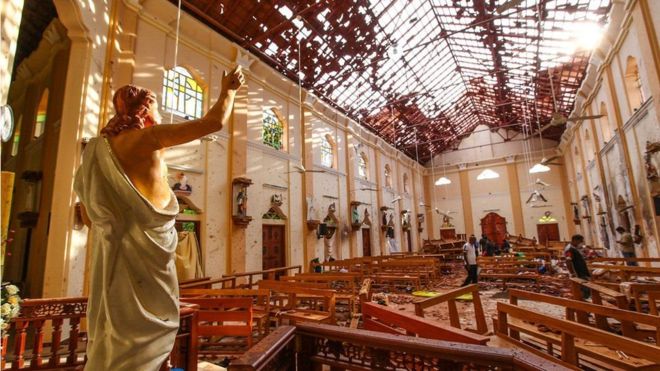



































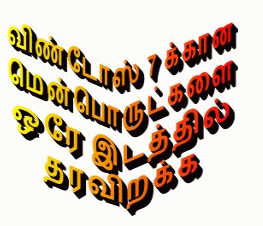













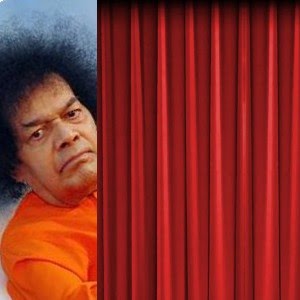













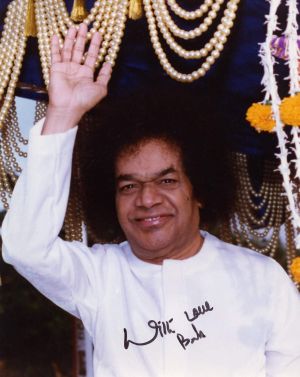


























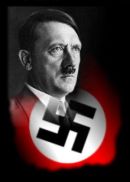





.jpg)
கருத்துகள் இல்லை:
கருத்துரையிடுக